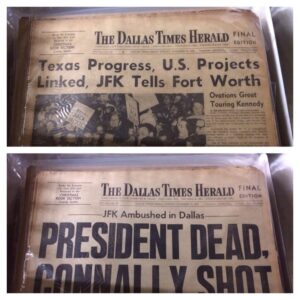Get an updated take on this topic from President Lori Russo here.
In our industry, we hear a great deal these days about “content.” We are told constantly that we all must “generate content.” But in an age where being published is something anyone can achieve, and information is available from countless sources, content is becoming a commodity. How do we sort through and prioritize it, or even know where the good content is? And with the popularity of sites like Reddit and Digg, how can we discern credibility?
Another popular topic of conversation among communicators is whether “traditional” media, particularly newspapers, are dead. Revenues certainly are down. Staff cuts are increasingly the norm. The ways in which the public consumes news and information have dramatically changed. And the massive disruptor of online journalism is not going away. The web has been and will continue to be an important part of the news business.
We heard an interesting comment this week from USA Today reporter Donna Leinwand Leger that got us thinking. She said, to paraphrase, that newspapers are still critically important for the public good, because every morning, a group of highly intelligent individuals gather in a room and they fight. These editors and journalists argue about what should be in the paper and what should be on the front page. The daily fight is about determining what are the most important stories readers need to see.
That comment started a discussion within our firm that resulted in this collaborative post. Here are four principle reasons we think print newspapers matter:
1. When a newspaper is delivered electronically, it is content. It is a mass of copy, art, photos, videos, comments, likes and shares that the reader makes his or her own judgments about. When a newspaper is delivered in print, however, it is far more than content: it is an experience. It becomes something richer and more innately important than all the information within. It gets your fingers dirty. It opens your mind to information, stories and perspectives you likely would not have chosen to receive through your RSS feeds or Google Alerts or may have skipped in the electronic edition because they failed to match your primary interests. But the newspaper compels you to turn each page, see what’s there and consider stories you might otherwise pass over because something compelling – a photo or headline – captured your attention. Newspapers deliver the world each day with an immediate and powerful impact.
2. Print publications serve as critical filters, guiding us to the most important, relevant and authoritative sources. Electronically, we must determine for ourselves what is important, accurate or even worth looking at (see note about RSS feeds above). Yet, with newspapers, the editors’ conscious and thoughtful decisions place each story on the page. With the newspaper in hand, you immediately notice the editorial decisions that fix one story above another. The reader recognizes what is “above the fold” versus below it, and appreciates that is not the result of happenstance. When a story is buried deep inside the paper, that also tells us more than the text alone. Placement adds dimension and substance to the story.
3. A printed newspaper is a daily snapshot of history. It is an accurate reflection of that moment in time—what we were all thinking, doing and experiencing. Electronic word is continuous, editable and ephemeral. Consider the news from 50 years ago today. A rare second final edition of the Dallas Times Herald was issued to share news that changed the country: President Dead, Connally Shot.
4. Newspapers make information accessible to a diverse audience. In Washington, D.C., New York and other major cities, it is easy to forget that not every American has a smartphone, tablet, computer or convenient Internet access. For those who don’t, print media still provide an essential window to the world.
The electronic edition is a valuable archive. We are grateful that technology enables us to revisit stories and share them with friends. For those reasons and many others, electronic media have a vital place and purpose. More so, newspapers remain an interactive part of the “new” media and must continue to evolve in this direction. We hope the print version, however, is never lost. It informs in a manner no amount of pixels ever can.
We won’t always agree with editorial decisions. We will sometimes rail against story placement. But we will appreciate that experienced, thoughtful and dedicated journalists applied reason and passion to the assembly of a paper affording us an experience we cannot find elsewhere or on our own.
Keep throwing it on our lawn. We are glad to have it.
This piece was a collaborative effort with contributions from Peter V. Stanton, Amy Calhoun, Lori Russo, Meredith Pratt, Emily Wenstrom, Cara Greene, Joe Contrino and Elynsey Price.
Get an updated take on this topic from President Lori Russo here.

